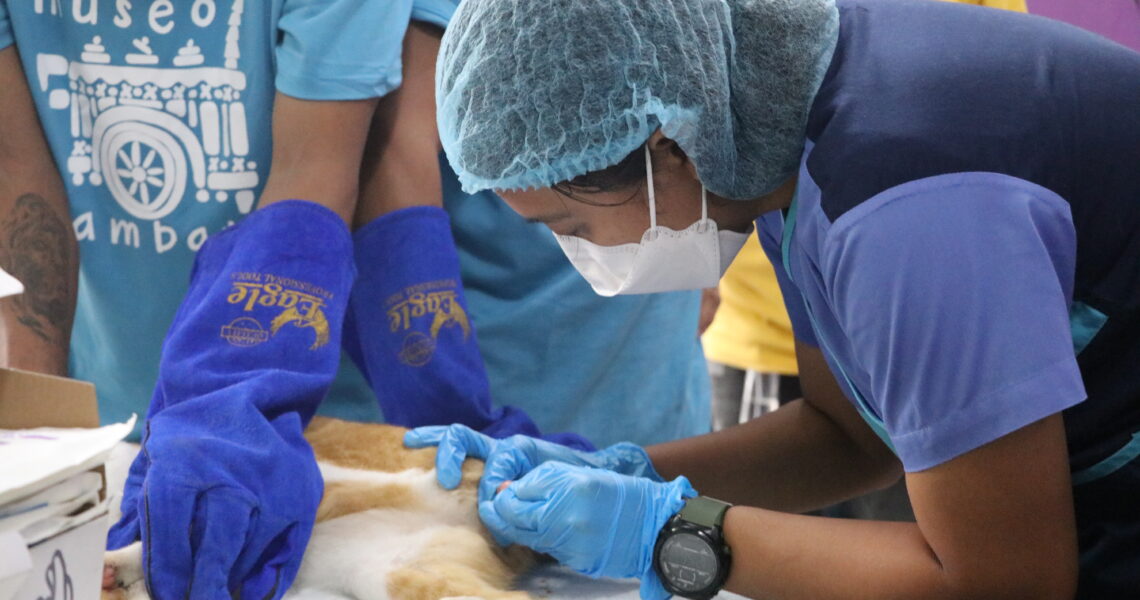Stomatitis
Stomatitis is a condition characterized by the irritation and inflammation of the soft tissues inside your pet’s mouth. Although it may not seem like a serious problem, it can develop into a painful and debilitating condition that could even put your pet’s life at risk.
In clinical use the term should be reserved to describe widespread oral inflammation (beyond gingivitis and periodontitis) that may also extend into submucosal tissues (e.g., marked caudal mucositis extending into submucosal tissues may be termed “caudal stomatitis”).
Inflammation and other changes may develop in the normal oral mucosa because of the tremendous amount of vasculature in the area and its proximity to the external environment.
Can also affect behavior due to discomfort and difficulties in eating; ophthalmic conditions due to proximity of some oral structures to ocular structures; and skin if inflammation extends to the perioral area.
A definitive diagnosis of inflammation often cannot be made based on physical examination findings alone.
BREED PREDILECTIONS
Ulcerative stomatitis in Maltese—higher incidence in males.
Oral eosinophilic granuloma—most commonly in Siberian husky (may be hereditary).
Gingival hyperplasia in large breeds (see Gingival Hyperplasia/Enlargement).
Rapidly progressive periodontitis seen mostly in young adult animals, such as in the greyhound and the shih tzu.
Localized juvenile periodontitis in the maxillary or mandibular incisor region—especially common in miniature schnauzer.
MEAN AGE AND RANGE
Juvenile-onset periodontitis in young cats.
Periodontal disease associated with calculus is seen most often in old dogs and cats and in susceptible breeds.
PHYSICAL EXAMINATION FINDINGS
Halitosis.
Pain.
Ulcerated lesions.
Ptyalism.
Edema.
Periocular inflammation possible due to proximity to the oral cavity.
Extensive plaque and calculus. Look for lesions on oral buccal and labial surfaces that are adjacent to teeth with large amounts of calculus.
CAUSES
Anatomic
Periodontal disease due to overcrowding of teeth
Lip frenulum attachment
Tight-lip syndrome in shar-pei
Metabolic
Uremia and high ammonia levels in saliva
Vasculitis and xerostomia seen with diabetes mellitus
Macroglossia and puffy lips as seen with hypoparathyroidism
Lymphoma can be seen affecting the palate and/or tongue
Immune Mediated
Pemphigus foliaceous
Pemphigus vulgaris
Bullous pemphigoid
Systemic lupus erythematosus and discoid lupus erythematosus in the dog
Acute hypersensitivity to drugs
Caudal stomatitis in cats may have an immune-mediated component
Trauma
Irritation from calculus and plaque
Foreign objects—gum-chewers syndrome
Electrical cord shock
Chemical burns
Lacerations
Snake bite
Blows
Trauma of the palate from base-narrow mandibular canine teeth
Toxic
Certain plants
Chemotherapy
Radiotherapy
Chemical irritants
RISK FACTORS
Poor oral health due to gingivitis, plaque, calculus, or periodontitis.
Stress may be a factor in caudal stomatitis in cats.
May be environmental factors in some cases.
TREATMENT
APPROPRIATE HEALTH CARE
Correct nutritional or hydration deficiencies as needed, on an inpatient or outpatient basis.
Dental disease or periodontal disease present should be treated.
NURSING CARE
Can place a feeding tube if necessary.
DIET
Consider using a hypoallergenic diet to reduce the antigen load that accumulates on the tooth surfaces in plaque. Dietary adjustments may need to be made depending on the patient’s ability to eat if painful.
SURGICAL CONSIDERATIONS
Sometimes most or all teeth must be extracted to resolve stomatitis, especially caudal stomatitis in cats.

